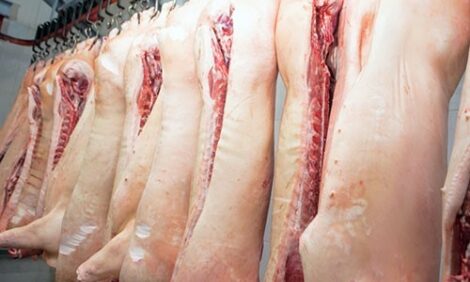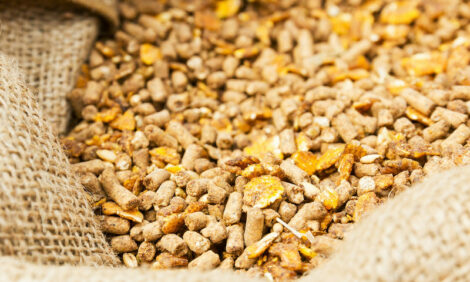



CME: Hog Industry Awaits WASDE Report
US - USDA will release its monthly estimates of agricultural supplies and demands on Friday, write Steve Meyer and Len Steiner.Both the Crop Production and World
Supply and Demand Estimates (WASDE) reports
will be released at 8:30 a.m. EST. The results of
DowJones Newswires’ monthly pre-report survey
of analysts regarding key crop production and
inventory figures appear at right. Analysts do not
expect any major changes from October’s estimated levels. The most notable would be the 0.4
bushel expected increase in the soybean yield.
Analysts expect a similarly slight increase in the
soybean crop but a very small increase in 2013
year-end stocks. Note that the average of the
predictions for corn yield is the same as USDA’s
October figure (122 bu./A) but the crop is expected to decline slightly.
These averages do not always match up but this may indicate an expectation of lower harvested acres.
The pork industry was shocked yesterday by news that
Bob Christiansen, founder and president of Christiansen Farms
of New Ulm, MN died Saturday of an apparent heart attack while
hunting in Missouri. Christiansen Farms was listed as the fifth largest individual pork operation in Successful Farming’s 2011 Pork Powerhouses rankings with 162,500 sows. It was included in the Triumph
Group in those rankings by virtue of being one of the owners of the
Triumph Foods plant in St. Joseph, MO. Christiansen was one of the
driving forces in the formation and success of that cooperative packing
venture. He was a leader in industry efforts to connect with consumers and rural residents and was a major contributor to animal education centers at the Minnesota and Iowa State Fairs. Those centers
included live births of pigs, calves, lambs and other farm animals and
the stories of how they provide meat, milk and eggs. Bob was only
51. We send our condolences to his family, friends and co-workers.
Following up on yesterday’s discussion of sow slaughter
rates — The unexpectedly low levels of sow slaughter during September and the first half of October have given way to even lower sow
slaughter levels the past two weeks. That is not what is supposed to
happen when producers lost an estimated $52/head in September and
are expected to lose an estimated $31 per head for each hog sold in
the fourth quarter. Theory and past episodes suggest that producers
will liquidate sow herds in an effort to reduce losses in the future. But
it is no happening. Purchase data the past two weeks (see the chart
at right) imply FI sow slaughter levels of only 60,730 and 60,930 head.
Those numbers would be 3.6% and 7.8% BELOW the levels of one
year ago. Not a very effective way of reducing supplies, is it?
So what is wrong with this picture? There are at least three
issues. First, it doesn’t appear that “the industry“ is losing anywhere
near the estimated amounts on each animal. The modeled average
Iowa farrow-to-finish producer would be losing these huge amounts
only if that producer behaved as the model does and buys all corn and
soybeans as they are needed and sells all hogs on the negotiated
spot market. There are producers who are still doing that but they do
not represent anywhere near the majority of the industry. Producers
are MUCH MORE ACTIVE IN MANAGING INPUT COSTS AND
SELLING PRICES — IE. MARGINS — THAN BEFORE and are not,
in general, suffering losses near this large.
Second, many producers representing a higher percentage
of output have been doing this for awhile. That means their financial
position is much better than most have estimated. The professionallymanaged, technologically-savvy producers — and not just the LARGE
ones — that account for the vast majority of U.S. hog production have
financial resources sufficient to last until positive margins return.
Finally, this is a short crop episode and hog producers know
it. Normal weather next year will result in 2014 carryouts that could
put corn near $4/bu. and bean meal back below $350/ton. Those are
not low prices versus history but they would put average carcass
weight costs in the mid-$70s/cwt. at a time when beef supplies will be
tight. “Holding on“ is both possible and quite rational, it seems.









